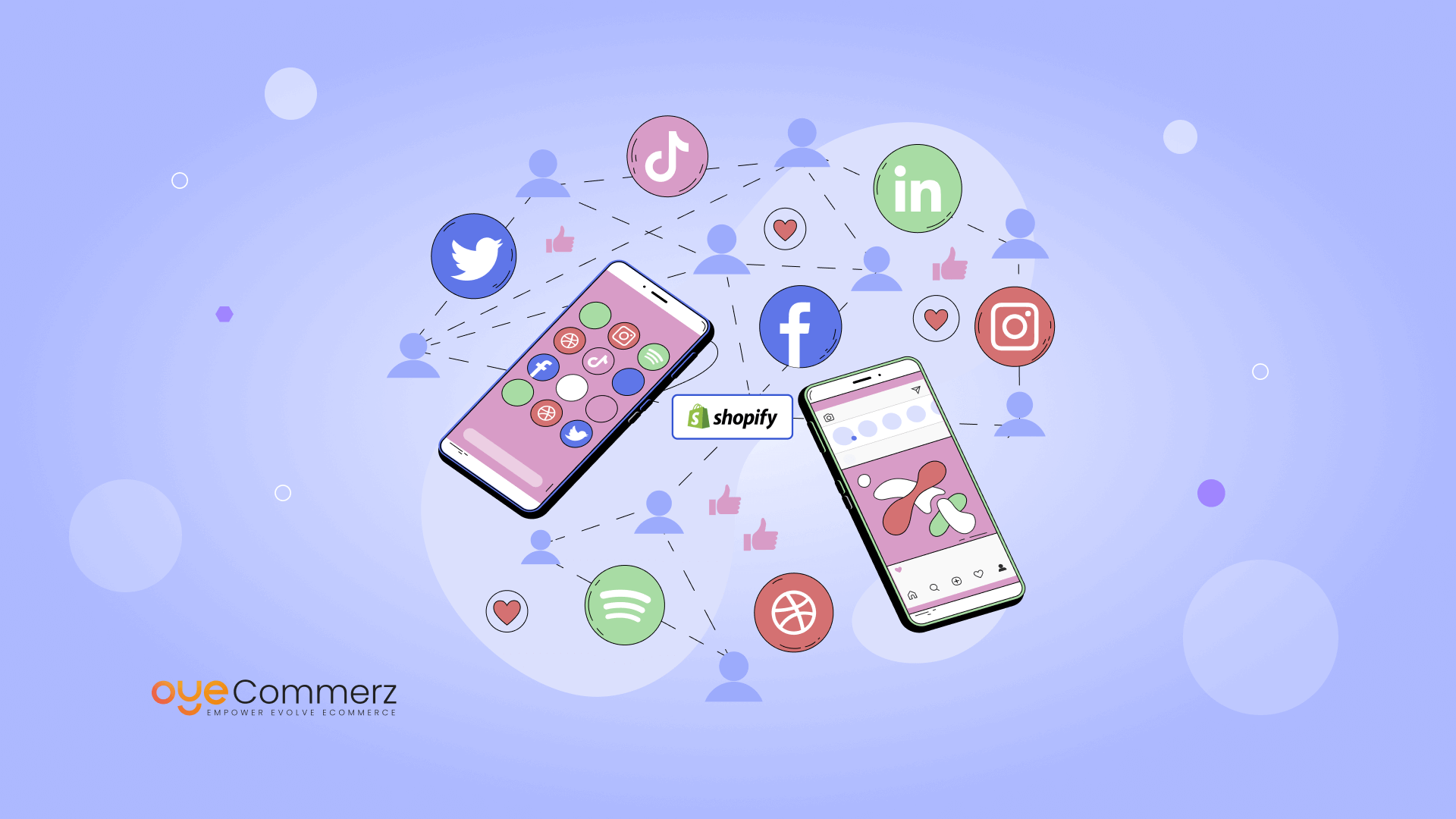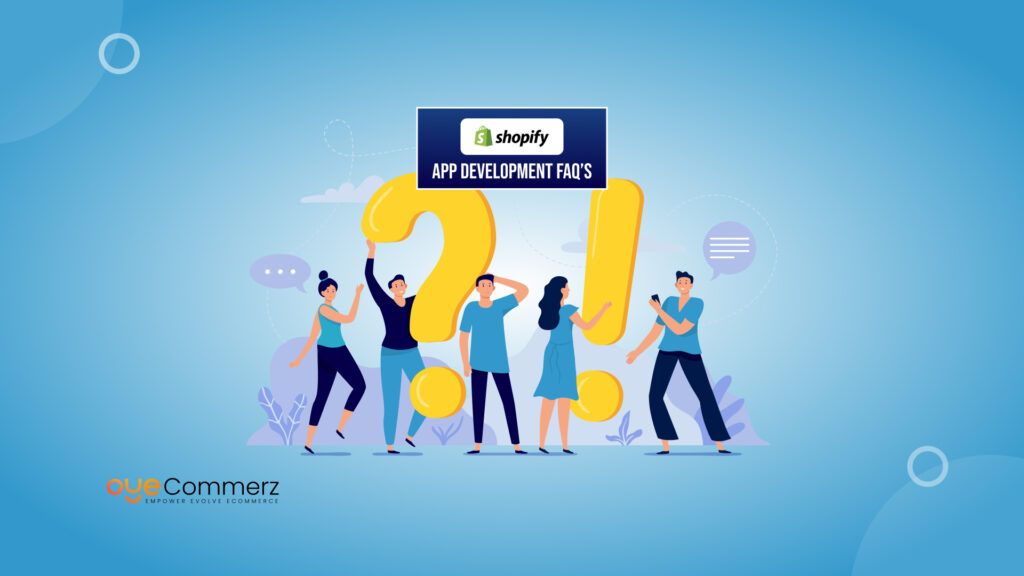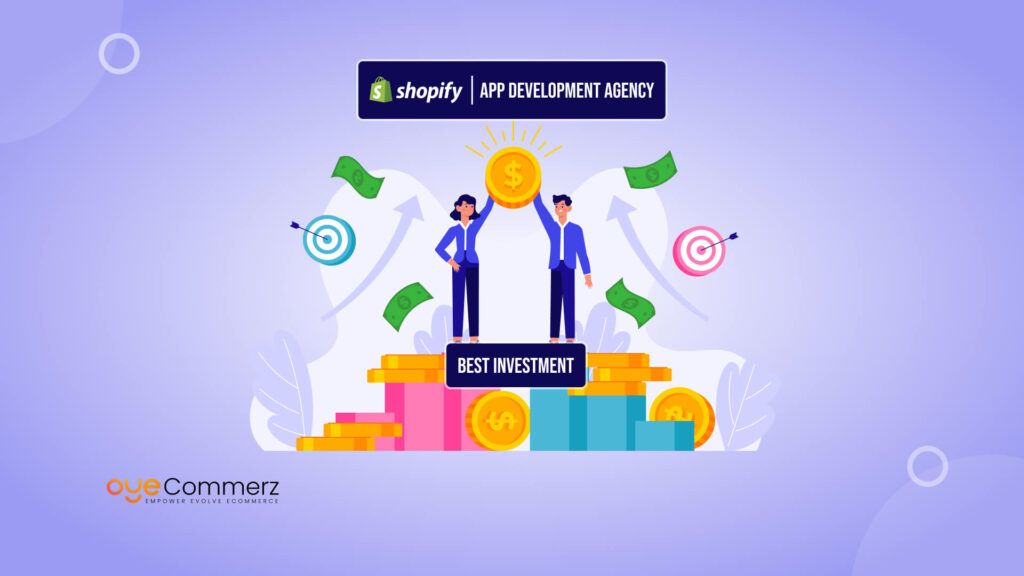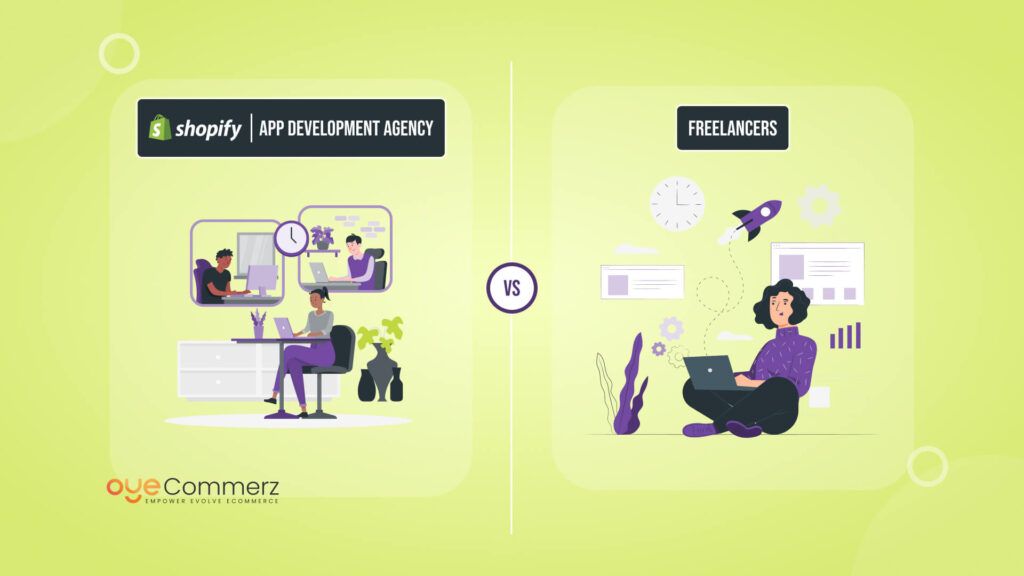Social media and e-commerce are two entities that go hand in hand especially because soc Any online business worth its salt understands the power that can be accrued by integrating social media platforms into a brands’ public profile. In general, Shopify store owners need to have a good strategy in the social networks as it is one of the significant factors where store owners should be successful. No matter whether you have just begun your eBay store or are aiming at developing it further, the lessons in how social media can be integrated to enhance your store’s reach, sales, and customer loyalty are useful.
This guide will ensure that you know the steps to follow to be able to easily link your Shopify store to other social media platforms. Here is what we are going to discuss in detail: When and how social media integration is needed and what should be avoided while shopify social media integration, You will have the whole kit and caboodle to make the most of your Shopify store on social media!
Table of Contents
ToggleWhy Social Media Integration Is Important for Shopify Stores
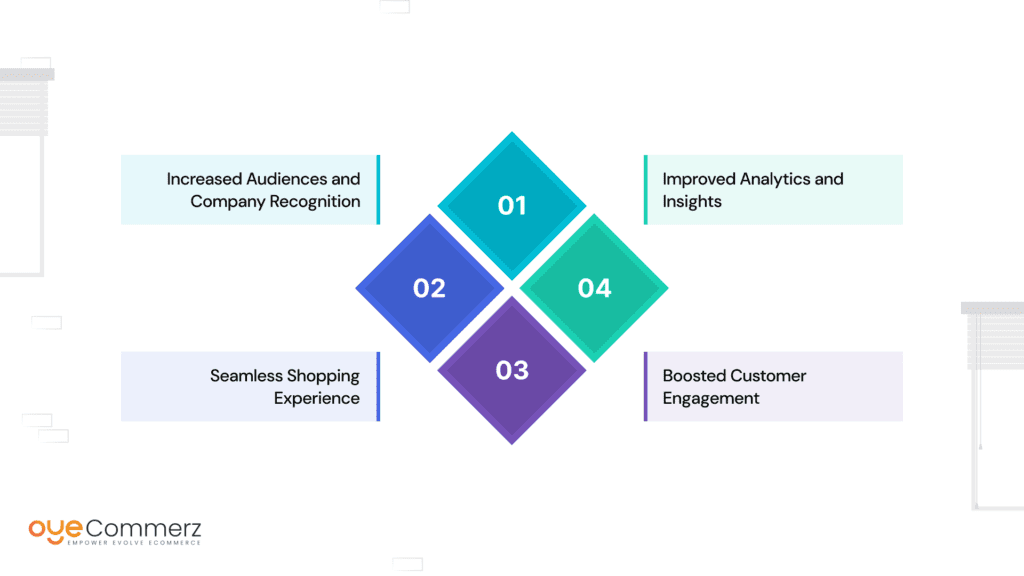
1. Increased Audiences and Company Recognition
- Twitter is where your potential customers are most likely at this present time. The formats of social networks are varied: Facebook serves 2.7+ billion active ones, while Instagram has more than 1 billion monthly active audiences, and Pinterest and Twitter have highly engaged specific audiences for target-oriented collaborations. Linking your store to the mentioned platforms will increase your scope and help you display your products. By integrating these platforms, you’re not just reaching more people, you’re creating opportunities to amplify your brand with Shopify social media integration, ultimately fostering greater recognition and customer loyalty.
2. Seamless Shopping Experience
- Synchronization of your Shopify store with social media platforms enables clients to make purchases without having to switch to other platforms. Solutions such as Facebook Shop and Instagram Shopping enable users to scroll their feeds to make purchases without switching applications, thus stimulating the effortless shopping experience. Shopify features allow you to transfer your inventory, process orders, and even advertise at the same place.
3. Boosted Customer Engagement
- Social media integration enables Shopify store owners to be able to interact with their customers instantly. Users can engage you directly in comments, DMs, or through features like Instagram stories, and thus the chance of establishing personal relations with the customers is high. It also opens up communication with the customers, which not only helps in building up feedback to understand their needs but also helps in building up trust and association with the brand.
4. Improved Analytics and Insights
- Social media integration with Shopify is useful because it tells the merchant on which social site the traffic is being generated and conversion is taking place. Shopify also has features for tracking performance that include click-throughs, views, and sales from the Shopify interface, which will help marketers to make decisions on the effectiveness of specific campaigns.
Social media integration not only provides valuable analytics but also contributes to increased revenue. eMarketer reports that businesses leveraging social media for marketing experience a 26% boost in revenue, attributed to better analytics and targeted advertising strategies.
Shopify Social Media Integration: The Essential Guide
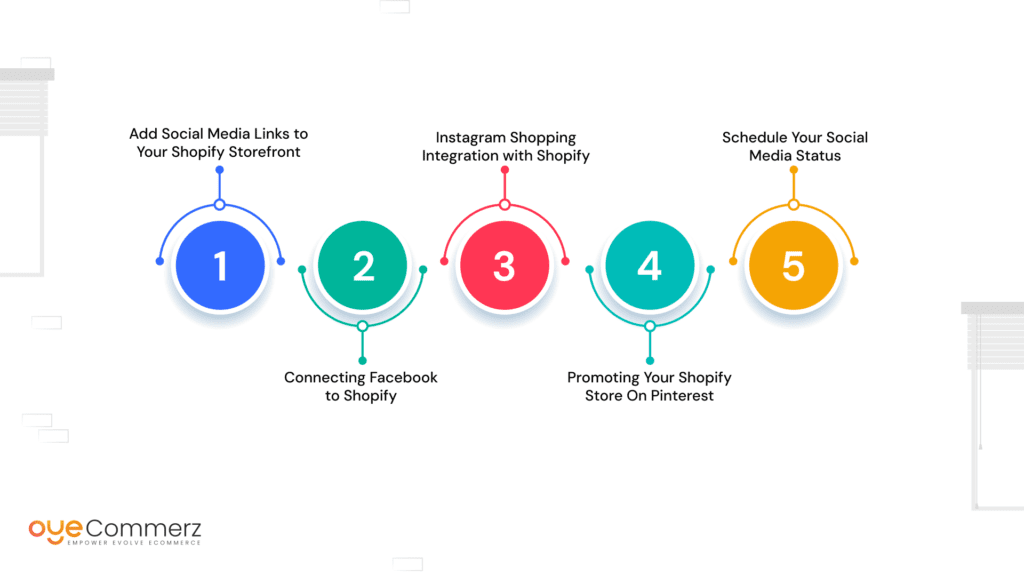
For these reasons and more, this comprehensive article will guide you on how to integrate major social media platforms with your Shopify store.
Step 1: Add Social Media Links to Your Shopify Storefront
Firstly, you need to make sure your Shopify store is connected to your social media accounts. Placing icons for Facebook, Twitter, Pinterest and other social networks on the homepage of your store helps drive extra traffic from your website to your social media accounts where people can follow your brand for, for example, special offers.
How to Do It:
- A Shopify user can get to this sort of app within the admin by choosing “Online Store” and then clicking on the “Themes” tab.
- Click on ‘Customize’ which can be found beside the active theme.
- To add social media icons specifically search for ‘Social icons’ or if they are located in the ‘Header’ or ‘Footer’ options in the theme editor.
- Type the links to the profiles in the corresponding fields and click OK.
Step 2: Connecting Facebook to Shopify
When it comes to e-commerce, Facebook is one of the social media platforms that will yield the best results due to its features and capabilities. Facebook Shop allows users to sell products in the application and share links to your store’s product catalog and application advertisements.
How to Set Up Facebook Shop:
- Navigate to the “Sales Channels” tab in your Shopify admin and then click on “Facebook.
- Select the option to connect Shopify to your Facebook account by following the onscreen instructions.
- Once you are connected, you can create a Facebook Shop that is linked to your Shopify product inventory.
Tip: Build up your Facebook customer base by tracking their activity through Facebook Pixel and get the most out of your ads by measuring the return on your ad investment.
Step 3: Instagram Shopping Integration with Shopify
Instagram Shopping features provide users the ability to easily shop through tagged posts and stories. Considering that Instagram is mostly oriented toward sharing images and videos, this function is ideal for advertising your products in a real-life environment.
How to Set Up Instagram Shopping:
- First, you need to ensure that your Facebook Shop is live and verified.
- Open the Instagram application and find the “Settings” option, then go to “Business” and then “Set Up Instagram Shopping.”
- Follow the steps to connect your Facebook Shop catalogue to Instagram.
- After approval, you can label products in your posts and stories.
Tip: Employ high-quality, lifestyle product images that inspire the users to click to purchase.
Step 4: Promoting Your Shopify Store On Pinterest
It is rather evident that Pinterest can be used more effectively for generating traffic to e-commerce websites. Its audience is always in search of something that inspires them and so a user can easily be drawn into engaging with brands and products.
How to Connect Pinterest:
- Navigate to Shopify and click on “Sales Channels”, and then select “Pinterest. ”
- Link your Pinterest business account and share your Shopify product collection.
- You can now create “Product Pins”, which means you can actually direct users from your pins to the product pages.
Tip: Post descriptive, attractive, and keyword-based pins to enhance your ways of getting noticed in Pinterest Search Engine.
Step 5: Schedule Your Social Media Status
Social media marketing can be quite consistent as it is done manually which in the process consumes a lot of time. Many apps can be connected to Shopify which include the likes of Buffer, Hootsuite, and Later which enables you to plan and schedule posts on different platforms.
How to Automate Posts:
- Purchase an automation app from the Shopify App Store such as Buffer or Hootsuite.
- Link your social media platforms.
- Promote your posts by choosing a date and time for posting so that your feed is not boring to readers.
Tip: It is advised to spend a couple of hours every week to plan a week of content for social networks so that even if it is a short time, there is constant promotion. With your social media posts and promotions scheduled, it’s vital to ensure that your payment processing is equally optimized. Mastering Shopify payment gateway integration ensures that all transactions are secure and efficient, supporting your sales efforts across social media platforms.
Maximizing Shopify's Potential through Social Media Integration
By now it’s important to ensure that your Shopify store is linked to the most important social media platforms in your niches and make the best out of these integrations by optimizing your performances through the use of relevant strategies and techniques.
1. Use Data from Shopify for Targeted Ads
With the built-in Facebook and Instagram ads for Shopify, you can target the ads based on your store’s performance data. You can present ads that directly relate to the customers’ activities, past purchases, and basic credentials to provide the best conversion rates.
2. Engage with the use of User Generated Content (UGC)
UGC serves an important role in increasing a target consumer’s social proof and trust. Ask your customers who purchased at your store to share their purchases on social media profiles and repost these on your Shopify Store and Social Media Channels. Tools such as Yotpo help you add customer reviews, and photos to your product pages as simply as it can.
3. Promote Exclusive Social Media Offers
Encourage users to follow your business on social media by offering exclusive promotions. This can make the customers recommend your store to their friends and family members and other people and also they will continue to shop from your store.
To get the most out of your social media integrations, it’s important to explore the top benefits of Shopify API integration. By using APIs, you can enhance targeted advertising, streamline data synchronization across platforms, and automate engagement tasks, all of which contribute to a more effective and efficient social media strategy.
Top Pitfalls to Consider
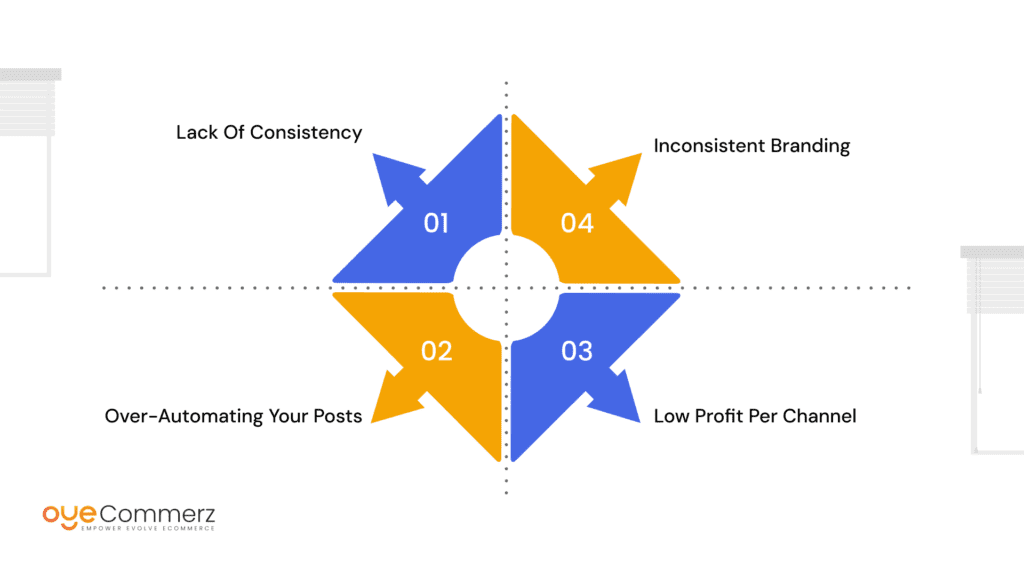
1. Lack of Consistency
There are many Shopify store owners who rarely or never take the time to check their social media and Shopify analytics. Therefore, the information disclosed in this paper will be highly precious when it comes to fine-tuning your approach. In this stage, you will be reviewing the insights so that you come up with what is effective so that you change your campaign.
2. Over-Automating your Posts
Automation is good but do not overdo it to the point where it becomes mechanical. Do not overburden on pre-planned posts or prescheduled posts. Follow and talk to your followers in real-time to create a bond that will make your followers loyal to your account.
3. Low Profit per Channel
This is probably the reason why some firms set their sights on too many social networks; it reaps less profit. Concentrate on 1-3 channels that correspond to the audience that you want to reach and dedicate your efforts to them.
4. Inconsistent Branding
Make sure that your Shopify store and your social media handles are branded similarly. This includes ensuring that such elements as the logo, colours, and language are kept consistent to create a standard feel for the customer.
Boost Your Business Social Media Presence with OyeCommerz!
At OyeCommerz, we specialize in helping businesses like yours maximize their e-commerce potential by integrating with the most powerful social platforms. Whether it’s setting up Facebook Shop, optimizing Instagram Shopping, or automating posts for Pinterest, our oyecommerz social integration team will guide you every step of the way. Let us help you boost traffic, enhance customer engagement, and drive more sales.
Contact OyeCommerz today to start integrating and watch your Shopify store thrive across social media!
Maximize efficiency with professional Shopify integration services
Conclusion
Social media marketing has become the order of the day and every company that wants to succeed in the ever-dynamic e-commerce industry must incorporate Shopify’s social media integration. If applied correctly using the tools available on Facebook, Instagram, and Pinterest, one is capable of promoting the business and ensuring that there is a constant flow of traffic and eventual purchases which result in the creation of a long-term customer base.

